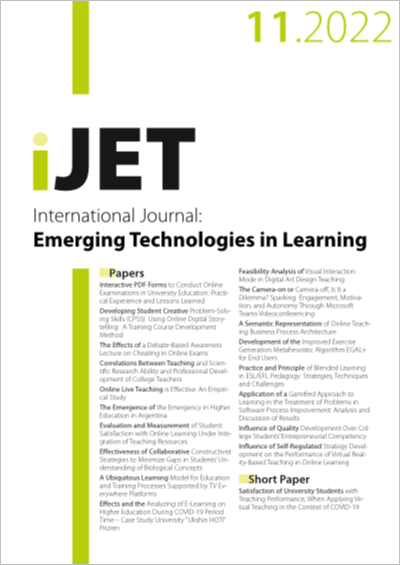The Emergence of the Emergency in Higher Education in Argentina
DOI:
https://doi.org/10.3991/ijet.v17i11.31113Keywords:
COVID-19, Higher Education, Learning TechnologiesAbstract
The context of COVID-19 has deeply penetrated various aspects of university life such as academic and administrative management; teaching practices and learning have been challenged, shaken and, in some way, transformed. This arti-cle will describe an ongoing study of trends in relation to the inclusion of tech-nologies; the representations about online teaching itself, before and during the COVID-19 emergency, and also a projection into the post-COVID and the impli-cations for student’s achievements before and during the emergency. A compari-son will be made between the data obtained from these two Argentinean universi-ties and the information published by the IAU Global Survey Report [1] in order to develop a broader map about the challenges ahead for Higher Education (HE). Besides, the article will include some inquiries about whether post-pandemic ped-agogical practices will change according to teachers' own views. Based on the re-sults of the survey, we have delved into a qualitative study that focuses on chang-es in teaching and assessment practices in HE that allow us to extract from the voices of practicing professors with many years of experience, possible scenarios that account for transformations in teaching practices and ways of learning for the next few years. The empirical statistical survey carried out on more than 400 pro-fessors and the in-depth qualitative study offer results that are enlightening to re-view, in addition, management, training and relationship decisions with the stu-dent body for the coming years
Downloads
Published
How to Cite
Issue
Section
License
Copyright (c) 2022 Uriel Cukierman, Carina Lion, Monica Scardigli

This work is licensed under a Creative Commons Attribution 4.0 International License.



